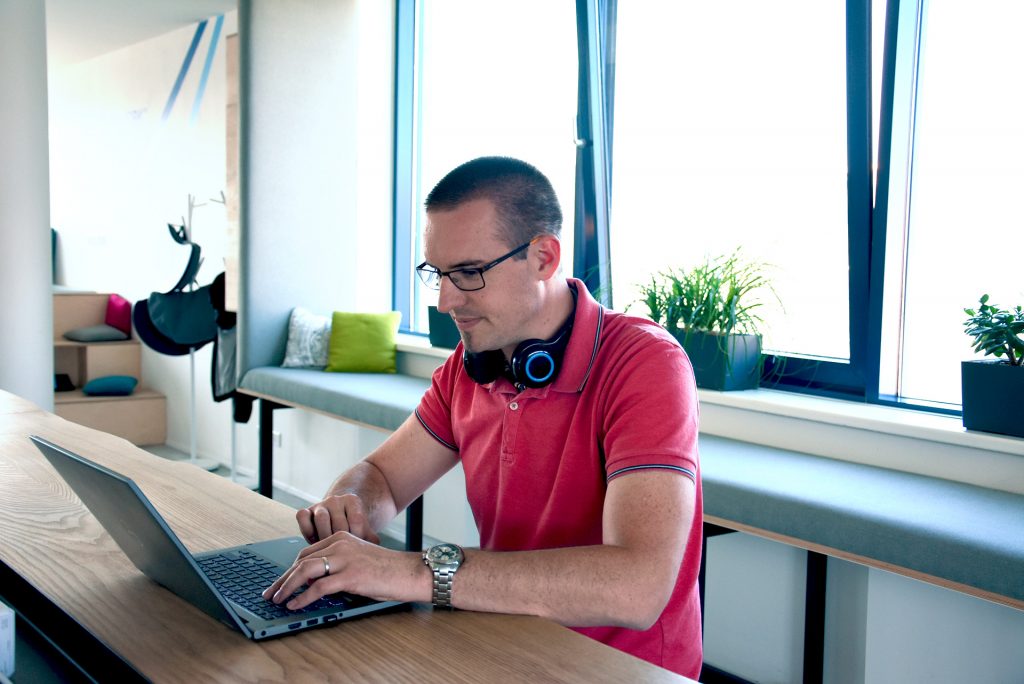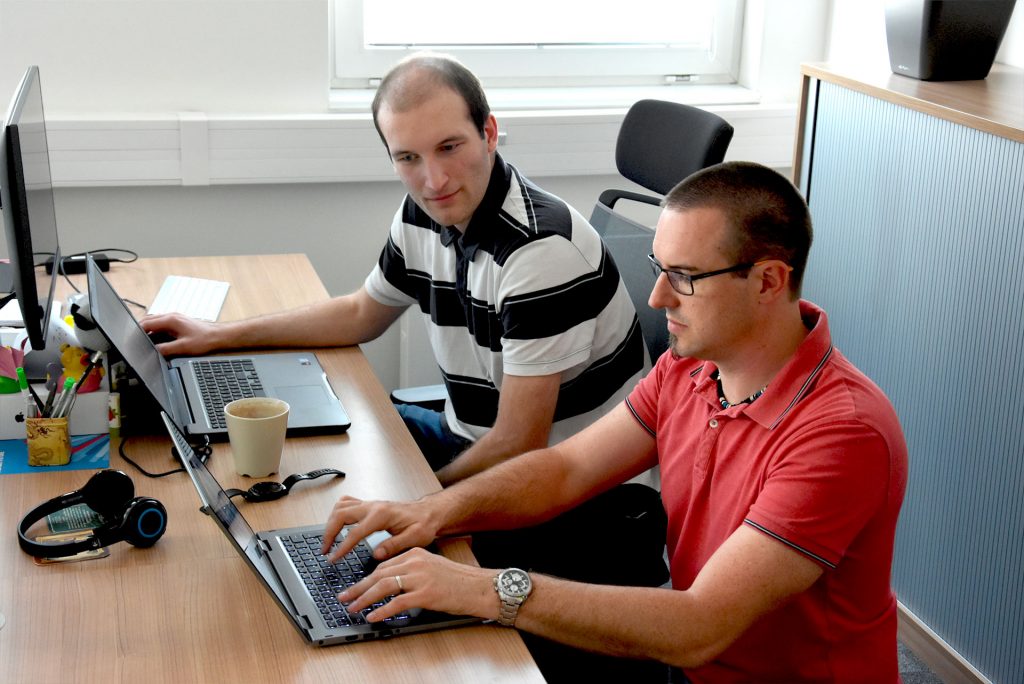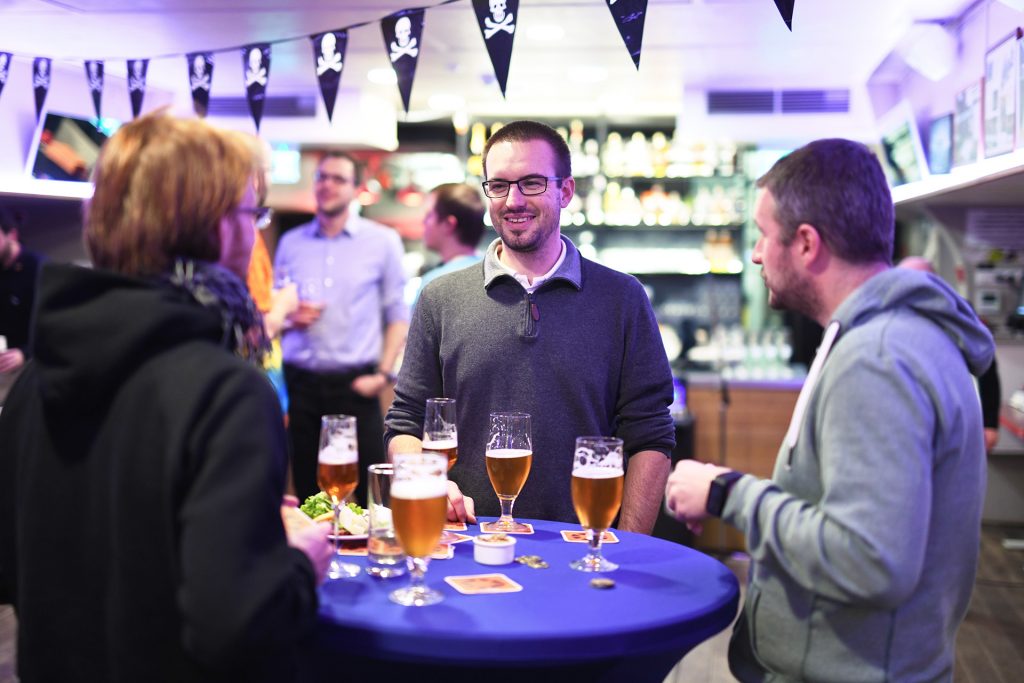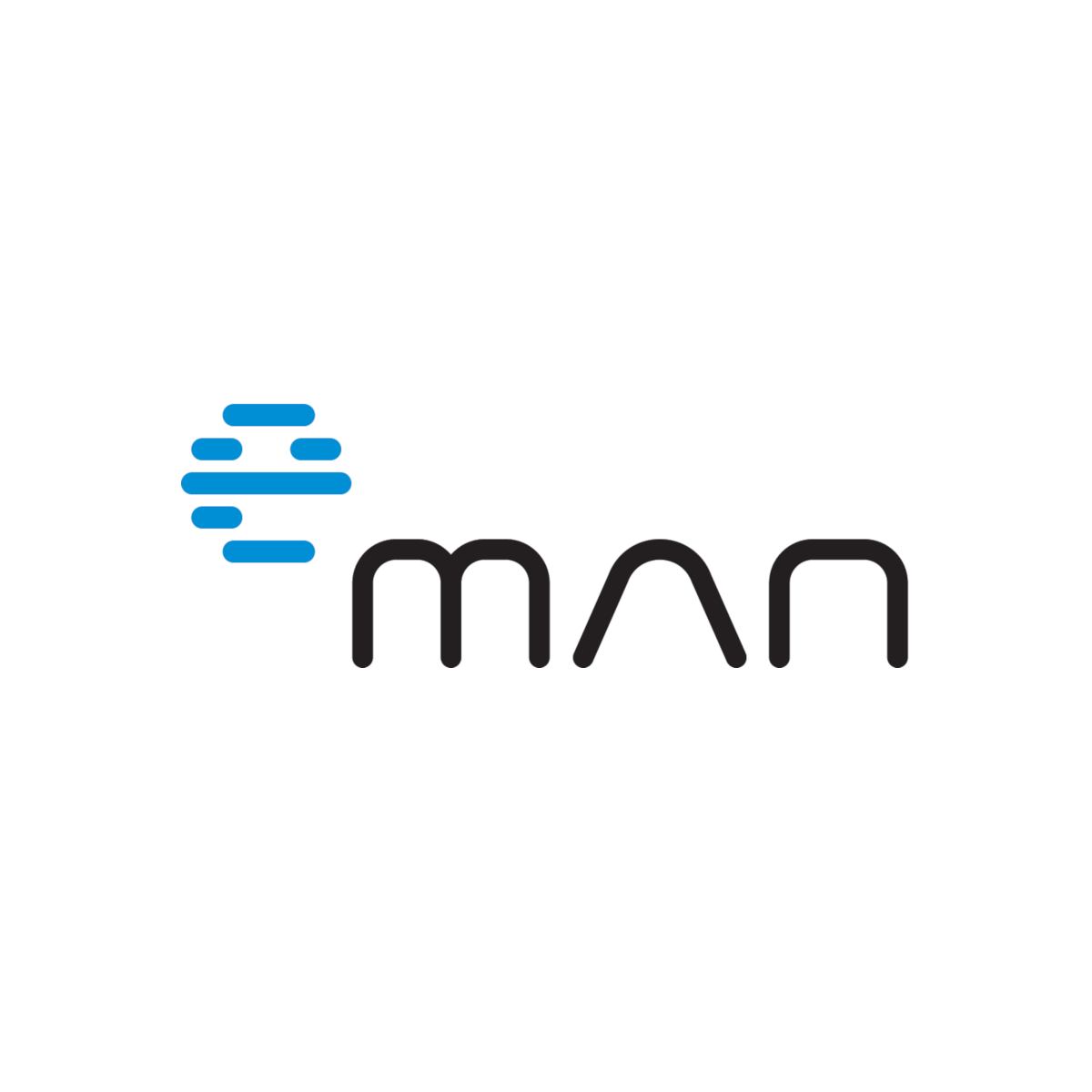Vladimir has three different roles at eMan. He leads projects for the energy industry sector, deals with architecture, and recommends new trends to the clients. Why did he decide to leave the position of Director of Operations at a large company to join eMan, a small company at that time, as a project manager? And why do cheating tablet users amuse him?
Vladimir Toman: “I realised I’m quite chatty, so I moved from development to project management.”
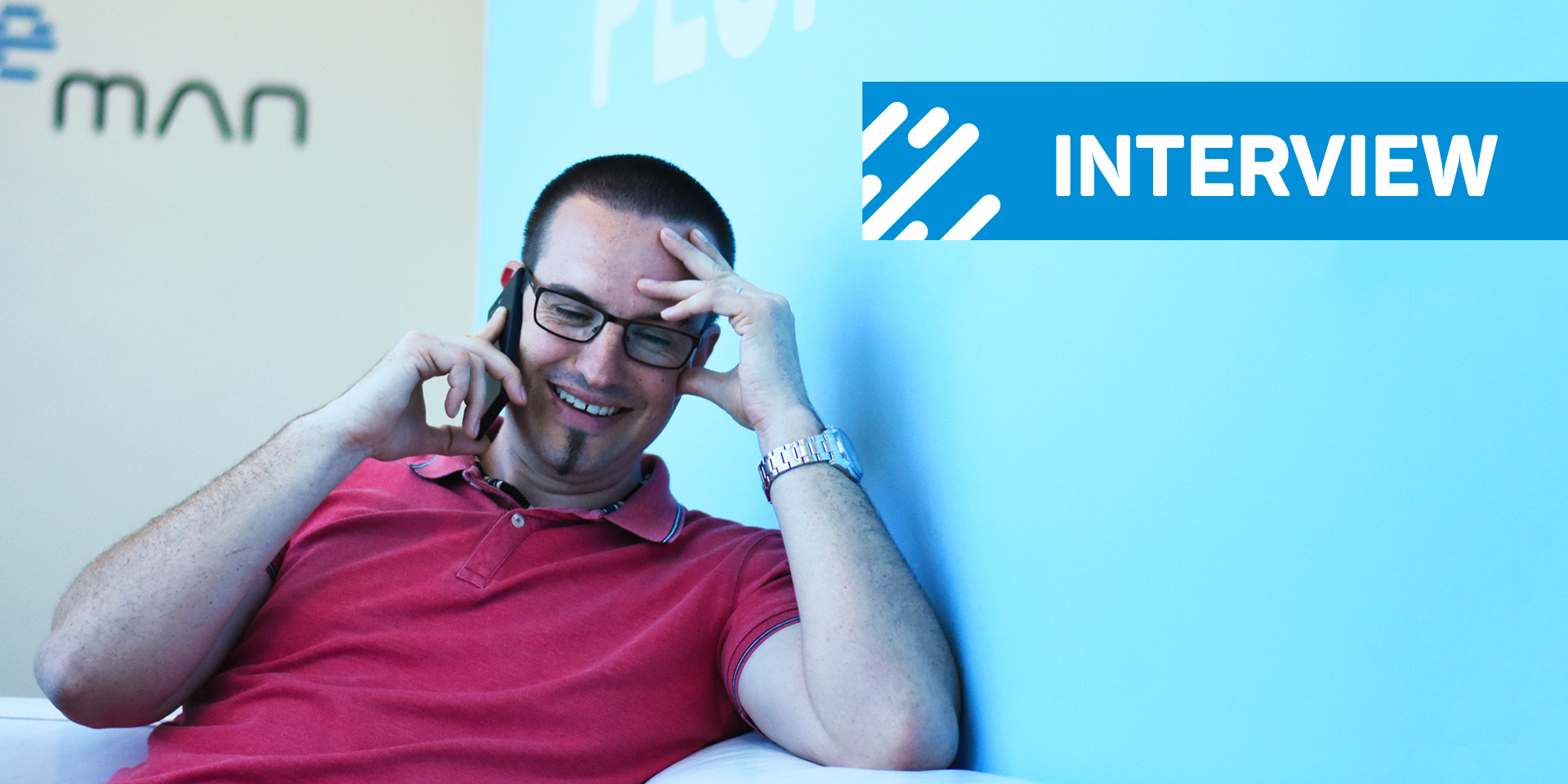
You have been a part of eMan for six years now. What were your expectations when you joined? And what was the company like back then?
The company was completely different. There were two project managers and around fifteen projects that five developers worked on. It was a really tiny company that fit into one office. The office had two rooms, one for developers and the other for managing directors. And there was also a small meeting room where you could sit.
What did you find attractive about such a small company?
I had already worked with all the owners for a few years at Unicorn. Well, I had worked with Michal Kosek for at least six years prior to me joining eMan. I took over his role when he left to start eMan. And, one sunny day the following year, they called to see if I too would like to join. I worked at Plzen back then and eMan was in Prague, but it all came together nicely. So I switched jobs and moved to Prague.
I joined eMan with the notion that I believed in those guys, and that feeling didn’t change. Michal Kosek told me that he needed help, that the work was too much for him to handle alone and that he could use someone who was like-mided.
“I joined eMan with the notion that I believed in those guys, and that feeling didn’t change.”
You joined six years ago as a project manager. What’s your role in the company today?
We started to understand it as a connection of three different roles. I’m still finishing some PM work on a few projects. Today, most of my time is dedicated to working as a Solution Architect and I also try do to a bit of business development when I try to push through new ideas to clients I deal with. And our branch in Plzen is also my responsibility, so there’s quite a lot of work.
This is because back when eMan started, everyone was doing everything. Even when we did apps for larger companies, we still had just a few employees. We did only mobile phones, Android, iOS and WP. And if you were a PM, you had to know everything. I designed the project’s wireframes myself, I consulted on the graphic design with the client. Of course I didn’t do the graphics, but I advised them on what should be where for it to function well. One had to manage the whole development cycle and figure out the integration of the mobile apps with the client’s systems. As a PM, I not only managed projects, budgets and our guys, but also did the API, designed wireframes, and consulted on everything with the clients and developers. Quite often the team consisted of only one PM, two developers and the client. That’s how it worked back then.
“And if you were a PM, you had to know everything. I designed the project’s wireframes myself, I consulted on the graphic design with the client.”
That might be the reason why Michal offered me a job at eMan; he needed someone who could take care of it all. And because it was three of us back then, we managed with three people. And as time passed, the projects become bigger and bigger. I had started my career as a developer working with larger systems so I had the technological background and I understood what it takes to run larger backend systems. Soon I found myself also dealing with the architecture while working on projects about integrating difficult systems for the clients. The architecture started to occupy more and more of my time and as the company grew, new PMs with lower technical specialization joined. But, on the other hand, they could manage larger teams. So I stepped down from my PM role and moved back to a more technical one. And because I had worked in operations before and everyone had told me how chatty I was, we realized that I could also communicate with the clients very well and sell something from time to time.
We’ve already talked about you working as a developer before joining eMan. What did you work on and in what programming language?
Well, the story gets a bit complicated again. I joined Unicorn as a developer, but I joined the operations and services team. So basically the job was to manage an already created software. I used Java and sometimes JavaScript. Then, Michal Kosek persuaded me to join the operations department full time. There I was responsible for server administration and the implementation of new apps into operation and its support. I strayed from the developer’s role a bit and learned something about databases, Linux servers and such.
In time they discovered that I like to talk and I was promoted to Team Leader. I was responsible for a few people and started reporting to the management. When eMan started, the Director of Operations role at Unicorn was suddenly empty so I took this position for a year. I handled recruitment, team finance, and decided on a comprehensive team vision. And that was purely a management role. From there, I moved to a completely different world at eMan.
“In time they discovered that I like to talk and I was promoted to Team Leader.”
So I jumped from Unicorn, where I was responsible mainly for the backend, to a company where the UI was the most important thing we were selling. That was really interesting! I moved from working on an internal project with an internal team in an internal company that did not meet clients, to a role that managed less developers than clients. I learned to manage customer-supplier relations.
Don’t you miss programming?
I’ve been missing programming for quite some time now, but not server administration. But I missed it also in my previous role. I always want to try to do a bit of programming again but I never find the time. But I realize that I probably won’t be able to get back to being a full time developer. It’s already been around ten years since the last time I actually sat in front of the computer and had a full day of programming scheduled. Of course I still understand the syntax, what our guys do. and the principles of architecture. I discuss these topics with them all the time but today I would not dare open the code and actually change something in it myself.
You’re behind eMan’s branch at Plzen. How did it happen? Did you simply persuade the owners that you want to get back to your hometown or what led to the decision to open a new branch in Plzen?
Yes, actually, simply said. When I moved to Prague, I considered it a temporary solution. I didn’t feel like raising kids nor living in Prague. So when the time of mortgage, marriage, and kids arrived, I started to think about my way back. And, fortunately, the company supported me. Also, one of the directors worked part time in Plzen and we had some key employees here so it was not a hard decision. I asked if they would allow me to work in Plzen and stated that if a branch should open there, I’d be happy to recruit new people and keep it running. The company said yes and we made it happen. And I’ve been here for around a year and a half already. In the beginning, there were two of us, then four after two months, and now there are eight or nine of us. I feel we’re reaching the capacity of our office but I think that we can still squeeze in another one or two people.
When you started at eMan, it consisted of two office rooms, and when you started a new branch in Plzen, there were only two of you. How do you see eMan today and what do you think about its development over the years?
The company eMan has grown incredibly fast. It has a hundred employees today. The change from a dozen to a hundred people is simply huge. At the beginning, we all knew everything, we shared one office and we shared the know-how just by sitting next to each other. Such times are gone… Today, the company has divisions and each division has its own knowledge and walks its own path. I can no longer enter the office and have a feeling that everyone knows me. And, what’s more strange, at least for me, is I feel like I don’t know them all.
On the bright side, we have a lot more experts in their respective fields. So nowadays it’s way easier to find an expert in a specific field if you need one. You know there’s “that guy”, you just find him and he’ll tell you all you need to know so you don’t have to look up all the info by yourself. And I feel that this is the correct set up. I understand that my design of wireframes would be worse then if it were designed by guys that are experts in this area. One also doesn’t have to order office supplies anymore or like if you need a table, you don’t need to go buy it at Ikea. It’s just different today and the progress was made in the right direction. Thanks to the company growing, it can get larger projects from larger clients resulting in a more long-term cooperation.
You were part of the team working on the first door-to-door app for Bohemia Energy as a project manager as well as an architect. Today, most of your work is for the energy industry. How did this particular field develop over the years? How do you discover new trends and present them to your clients?
The energy industry is a pleasant field as it’s quite regulated by both, the EU and the state. It’s not very competitive though, from let’s say a distribution point of view. There are no two sets of power lines in order for someone else to offer a different product. And the consumer base doesn’t fluctuate that much between the main suppliers either so the whole field is not that competitive. That’s why even my clients are a bit slow in accepting new trends. But that makes my work easier, I only have to get in touch and tell them that today the approaches are different and whatever they want to do can be done differently. So we have a lot of opportunities to bring our knowledge from the faster-paced segments of the market into the energy industry, which creates value for the client.
And we also have several years of experience already with thousands of tablets running our app and using it in a B2B environment. We know very well how to sell our know-how. The new trends are quite publicized today, everyone is talking about them so we are also asked about topics concerning the internet of things, remote power consumption, streamlining household management, and so on. That’s very nice and I think we’ll develop further in the energy industry.
”The new trends are quite publicized today, everyone is talking about them so we are also asked about topics concerning internet of things, remote power consumption, streamlining household management, and so on.”
The most interesting part when working with the B2B sector is communication with the end-users who are employees of the companies. In the end, the tablet is used by the employee who is, for example, a door-to-door salesman or distributor. As developers, we wanted the app to run without any issues and we did not deal with, e.g., the possibility of users cheating, trying to circumvent the app, or trying to get into the secured tablet, and that’s interesting. Or even stealing the tablet…
“As developers, we wanted the app to run without any issues and we did not deal with, e.g., the possibility of users cheating.”
So now, in the app’s lifecycle, we discover not the needs, but the vices of users. And we try to secure our app against those. Or you meet the employees of a big company and start dealing with the unions while doing software development. And you have to account for the fact that the app cannot track the employees at work. It cannot be complicated, slow, and so on. So on one hand you try to figure out how an employee installed a game on the secured tablet and try to prevent similar occurrences. And on the other hand you have to get rid of a lot of features because the employees don’t want them.
What do you enjoy the most about your work? Where do you get the sense of personal satisfaction?
What satisfies me the most is when I can offer the client an added value. It sounds a bit cliché but I really enjoy when we hear the client out and identify issues in their processes. Maybe it’s not even an issue but something that can be improved. And I come up with a simple, inexpensive solution and tell them that this is what they could do and that it’ll work. Then we deliver and, after a month, I talk to the client and they present me with numbers showing the increased efficiency of the process. I see their smiles and sparks in their eyes. That is what I enjoy the most about my work.
I also like the fact that our solutions are developed in such a way that it makes sense to the client, not just to maximize the profits. For example when the client doesn’t specifically state that something should be configurable, we’ll make it configurable right from the start anyway. Then a half year later the client gets back to us stating that there are changes needed and asking how much this will cost. We just reply “nothing”. That’s very enjoyable because it sort of gets back to you. You can see that the client is satisfied. Sometimes they return after a year of having the solution operational to compliment us on our work and say that they want to develop our cooperation and involve us in a new project.
“I also like the fact that our solutions are developed in such a way that it makes sense to the client, not just to maximize the profits.”
And working with people is also very exciting. Working with young colleagues at eMan, absorbing new information, and constantly discovering what’s new and hip for people that are one generation younger than myself is also very entertaining. You learn all your life. I really enjoy people at eMan.
Do you have any funny stories to share? What has motivated you to move forward or made an impression on you during your time at eMan?
Well, I can’t really say there’s one thing because there are just so many… I have to say that the beginnings were full of funny, interesting moments. I worked on Taxiagent, an app similar to Uber or Liftago. I was so into the app and wanted it to work well, that in the tram or bus on my way home I had the app opened and checked if everything worked well and that it measured the distance correctly. When we needed to test if the app entered the waiting mode and calculated the money correctly when a car stopped on red, I was running around Vinohrady with my phone in hand. The app was on, I was jogging and checking if all was working well, what the battery usage was, and so on. So basically this app was the first thing I saw in the morning and the last thing before I closed my eyes at night.
“When we needed to test if the app entered the waiting mode and calculated the money correctly when a car stopped on red, I was running around Vinohrady with my phone in hand.”
I test our solutions in real life even today. But I leave the actual testing to our testers and focus only on finding the real pickles. For example, we are developing an app for workers who assemble equipment at the client’s side and use the tablet for various purposes like tracking the time spent or pairing the installed device. So when the app is released, I’ll be the one to take the app and try to work with it as the worker would. Imagine it as getting somewhere with the tablet in your bag, switching it on at the location and leaving with it afterwards. I always try to be part of this real life testing. Even if I am only designing an API for example, I am one of the first who actually uses the app and sees how the user would see it. I am usually the first contact for the client so I make sure that what we produce is what the client wants. Because, as you know, sometimes the client wants something, the info then passes through several people and in the end you get a product that is not exactly what the client expected. That’s why I try to stay involved and keep on telling the guys that the work is really good but the intended purpose was a bit different.
“Because, as you know, sometimes the client wants something, the info then passes through several people and in the end you get a product that is not exactly what the client expected.”
I don’t want it to sound cocky but I meet the clients a lot so what we do and deliver is really important. That helps the clients and that is what they’re grateful for. And eMan knows how to do this very well. You can see that the clients are satisfied, that the work you deliver has meaning and added value to them. You can see that we’re not about having the most possible hours paid, we want our work to have meaning. And that’s something that makes us stand out from the crowd, something we cannot lose.
“You can see that the clients are satisfied, that the work you deliver has meaning and added value to them.”
